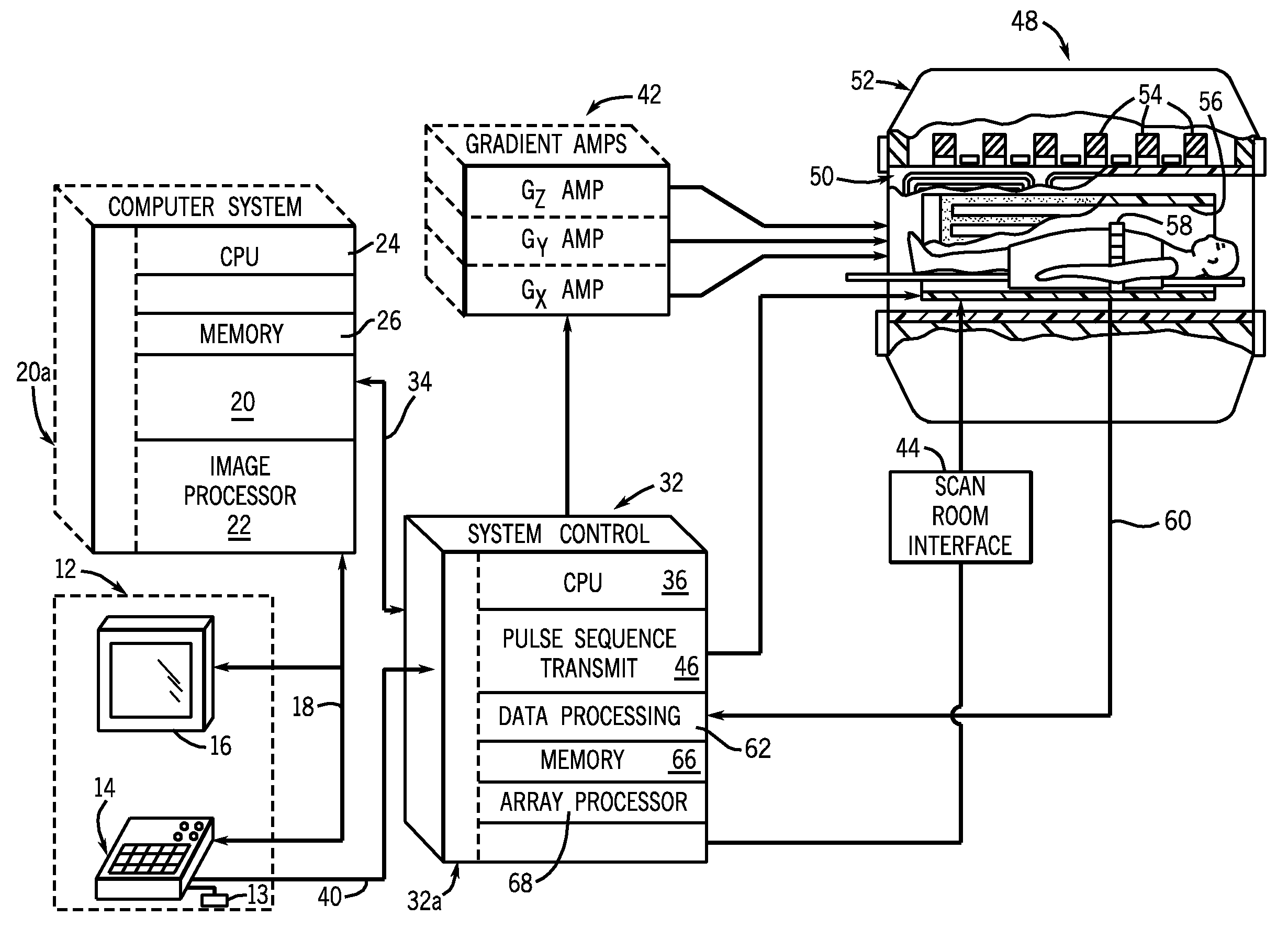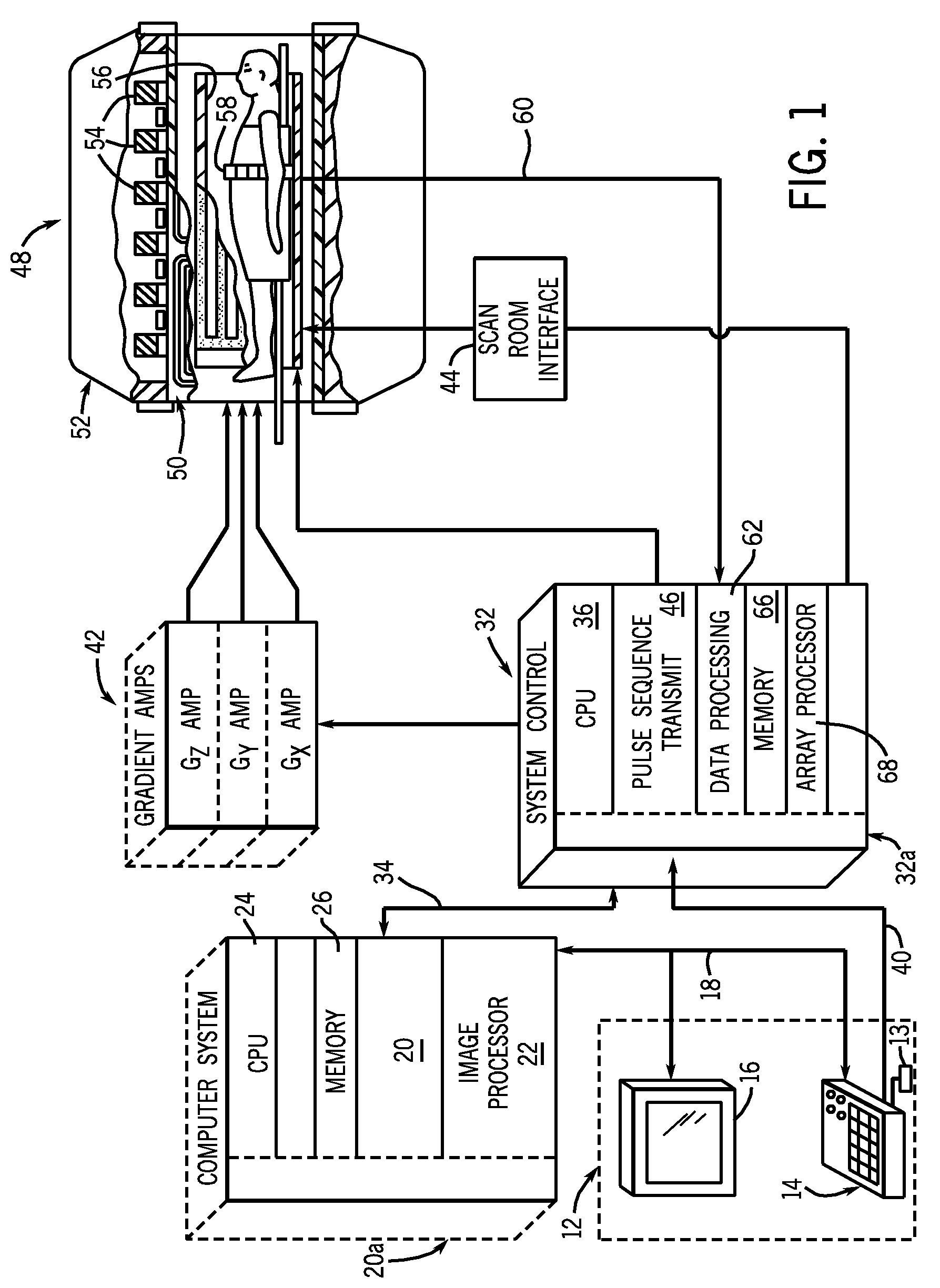Proton decoupled hyperpolarized magnetic resonance imaging
a technology of protons and magnetic resonances, applied in the field of magnetic resonance imaging, can solve the problems of limiting available sampling time and snr, methods that are not known to be used in imaging of hyperpolarized substances or substances with non-protonated nuclei, and the effect of reducing signal strength and signal strength decay
- Summary
- Abstract
- Description
- Claims
- Application Information
AI Technical Summary
Benefits of technology
Problems solved by technology
Method used
Image
Examples
Embodiment Construction
[0022]The following description includes a discussion with reference to a preferred embodiment involving the excitation and imaging of substances containing 13C nuclei. However, it is to be understood that the system and method described herein find corresponding and equivalent applicability in the imaging of other non-hydrogen nuclei, such as 15N, 31P, 19F, and 23Na nuclei as well as other well-known excitable nuclei having a net spin. In addition, the system and method need not be limited to imaging of metabolic processes. Imaging of individual or non-interacting substances which experience the effects of long range proton coupling may also benefit from the features described herein. Furthermore, the system and method as applied to non-hydrogen excitable nuclei does not preclude its use in combination with, or augmented by, traditional hydrogen imaging.
[0023]Referring now to FIG. 1, the major components of an example magnetic resonance imaging (MRI) system 10 incorporating an embo...
PUM
 Login to View More
Login to View More Abstract
Description
Claims
Application Information
 Login to View More
Login to View More - R&D
- Intellectual Property
- Life Sciences
- Materials
- Tech Scout
- Unparalleled Data Quality
- Higher Quality Content
- 60% Fewer Hallucinations
Browse by: Latest US Patents, China's latest patents, Technical Efficacy Thesaurus, Application Domain, Technology Topic, Popular Technical Reports.
© 2025 PatSnap. All rights reserved.Legal|Privacy policy|Modern Slavery Act Transparency Statement|Sitemap|About US| Contact US: help@patsnap.com



